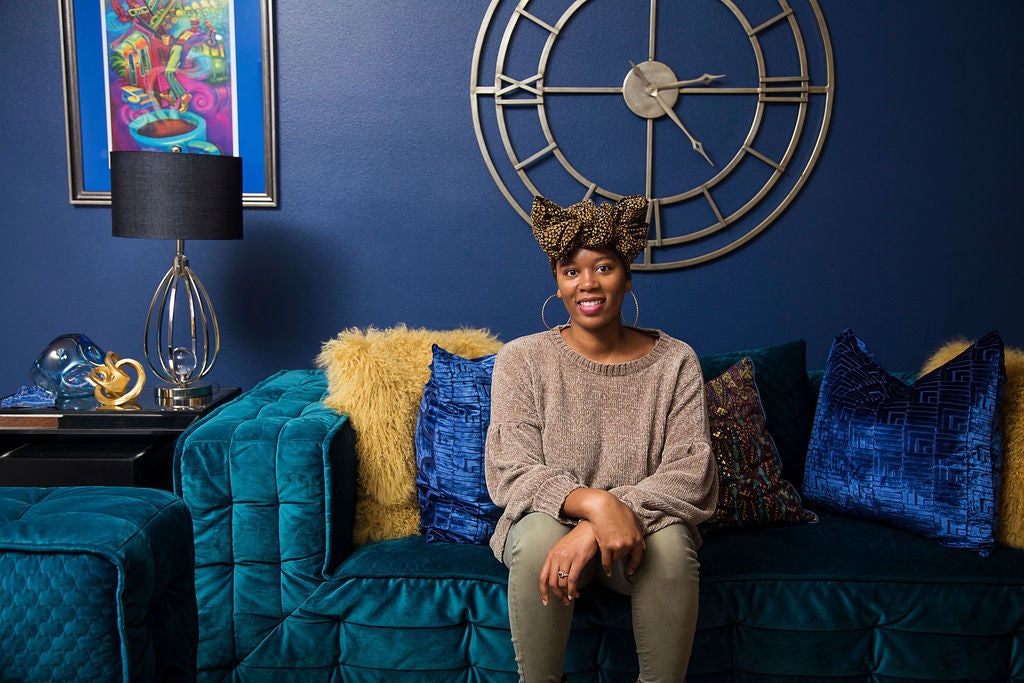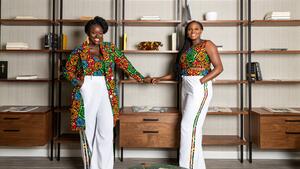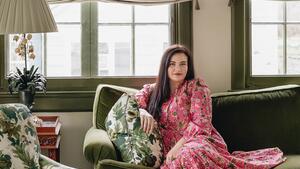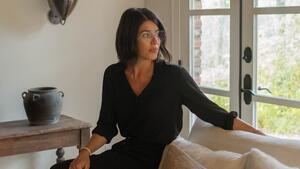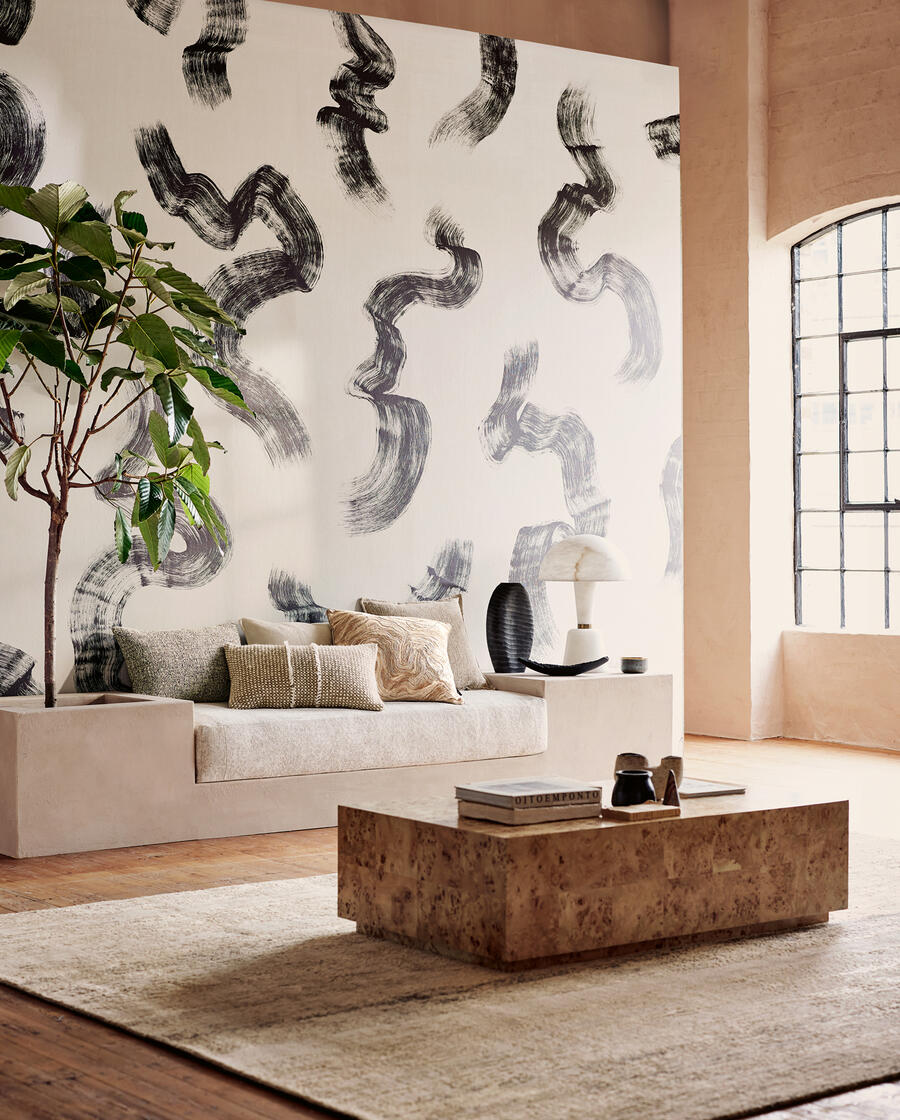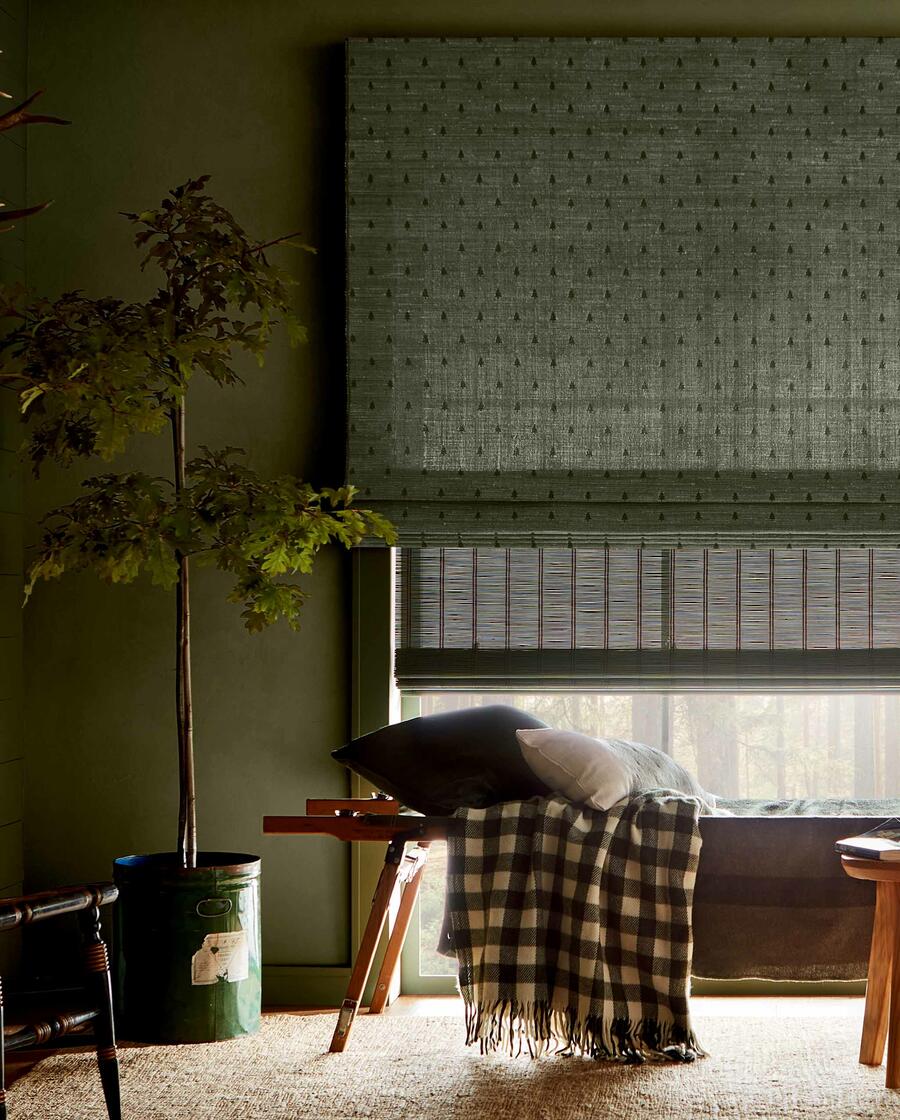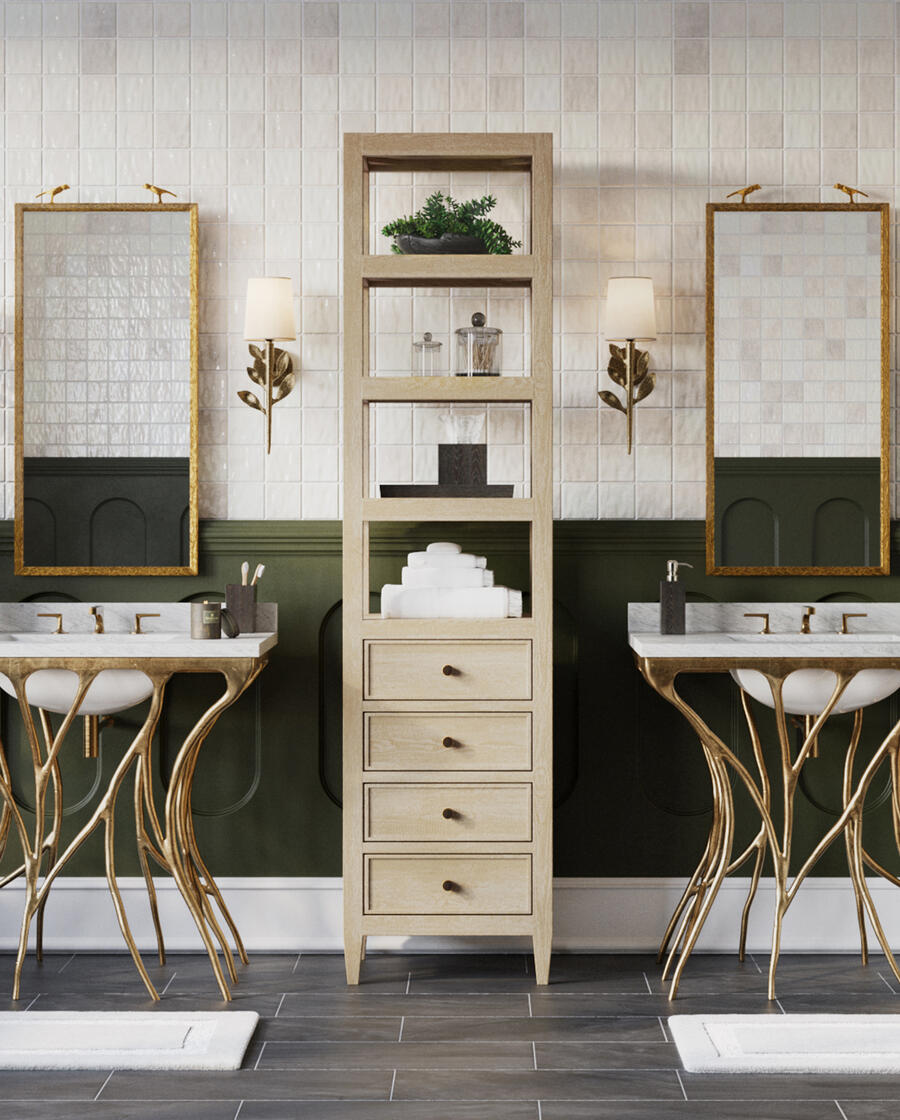The 50 States Project is a yearlong series of candid conversations with interior designers across the country about how they’ve built their businesses. This week, New Orleans–based Whitney Jones tells us why she wants to keep her firm small, how she stopped letting her budget rule her projects, and why raising her rates changed the way she worked for the better.
When did you first know that you wanted design to be something you pursued professionally?
Growing up, I always had this sense of needing to have a professional career, and I didn’t realize that I was a creative. It took a long time to get to that point. I literally never drew a thing until I got into design school—and then I was like, I’m actually quite good at this.
I started my business in 2012—it was January 12th, 2012. I had just started going to school through the online interior design program at the Art Institute of Pittsburgh, and for one of our projects, I started a blog called The Decorating Chronicles of a Cheap Chic. It’s funny, because I’m not cheap at all, but that was kind of my thing at the time. I didn’t have any money, so that’s where I was at.
What are your earliest memories of design?
I’m the oldest of eight, and my mom raised us by herself in this small three-bedroom apartment. Without a whole lot of money to update things, her way was to move the furniture around. I think that’s probably why space planning is my favorite part of the design process—because it was something I always watched my mom do, and you always see how much a space really can change when you rotate your furniture.
When I first graduated from high school, I went to the University of New Orleans for biology and thought that I wanted to be a scientist. And when I lived in the dorms, I loved having my own space that I could decorate and make my own—and that’s how I got into it. I dropped out of UNO, then went to Tulane University and dropped out there. I was in college when Hurricane Katrina hit. We went [to stay] with family a few hours away, and we were gone for a few weeks. When we came back home, there was no school. I started working retail—I was at Macy’s, and then I got a job selling appliances at Home Depot, which was really fun. I loved every part of that.
Was it the selling that appealed to you?
Yes. I am a really good salesperson, to be honest. I [eventually] left Home Depot to work at Sears, where I would get a commission, and I made really good money there. It held me over for a long time until I found my love for the design industry.
What inspired you to launch your own firm?
When I started my blog. I shortened the name to Design Chronicles, and then I started to actually take on virtual projects. My first big project was for a kitchen and bath online retailer in Australia—they hired me to do some 3D renderings of their product. After that, I decided to start really taking it seriously.
I was already tech-savvy, so I knew how to be smart about SEO and finding different ways to get the word out there on Google when people are searching for certain things, and to associate my blog with hiring for virtual design services.
Did you also work in person?
When I started taking virtual clients, I also started taking on clients locally. For about a year, I ran an ad on Craigslist to design for $99 per room. I was pretty much working for free, and the projects were awful. They really didn’t have any high expectations of me—because what could you do when you pay $99 for a whole room? It was always just running around shopping and then the clients being unhappy and questioning everything. It was a disaster, but I learned so much from it and got so much confidence. I had clients tear down all my designs, so I mean, there is nothing a client can say to me now. At this point, I know I’m way better than I was back then. I learned all the things that I was not supposed to do because back then, I did it.
Virtual work in 2012, 2013—I feel like that makes you a very early adopter to that space.
Oh, absolutely. Let me say this: I’m not a shy person, but I have a really hard time being my loud, boisterous self in person if I don’t already know you or if you haven’t made a connection to me. But online, I’m very comfortable. People would ask me for advice, and it was just so much easier for me to have this confidence on the internet, when people don’t know you personally and can’t see you. Typically, when I’m meeting clients or having a consultation or trying to present a project, I’m stumbling over my words. But if you jump on the phone, I’m the most confident person. I always say I can sell anything, but I was the most confident back then when I was doing stuff virtually.
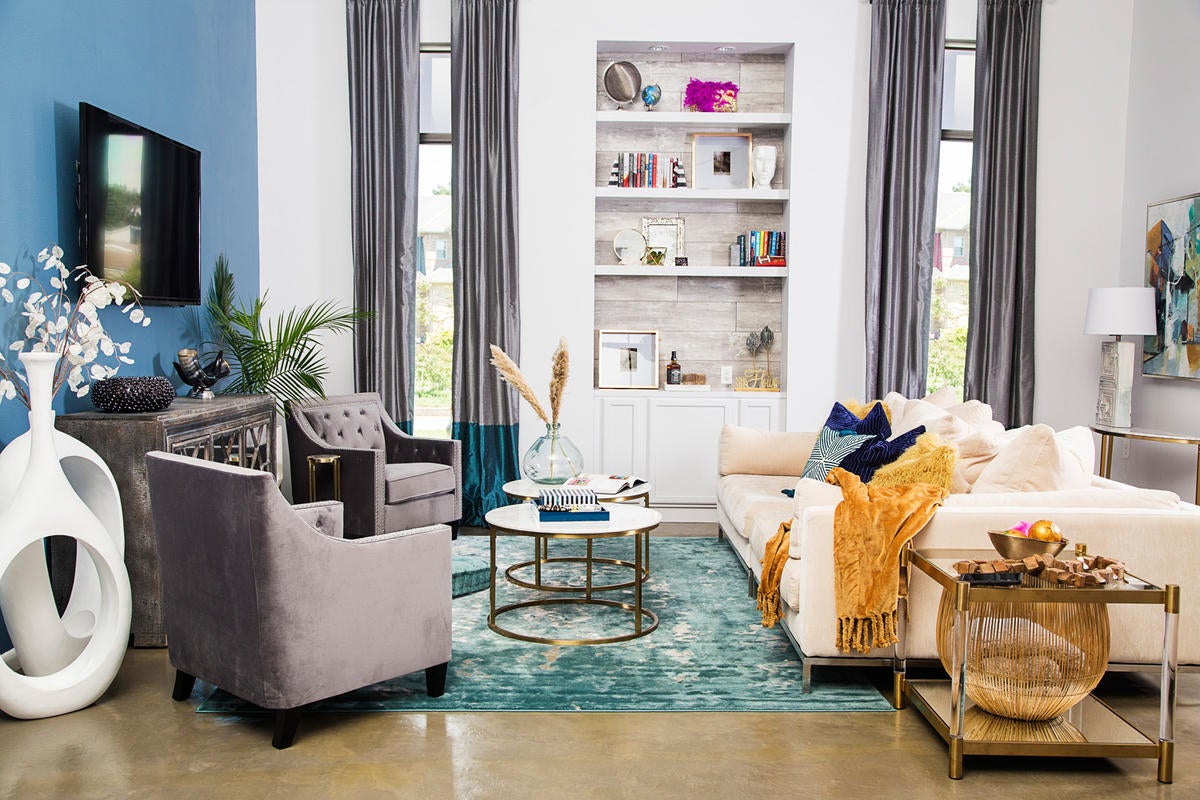
How did you attract virtual work?
There weren’t a whole lot of people that were doing [design online] back then, and I was pretty much asking for the sale all the time. Whatever my goal was in each of my blog posts, I would mention it throughout the post—I’d find a way to say it. Typically, the goal was to get a virtual consultation or a virtual client.
Back then, I had a tab at the top of my blog that said, “Book me for a consultation.” That was a popular page people visited, probably because a lot of people expected it to be free. It wasn’t—I was charging $35 per hour. It was a really good way for me to get a lot of experience in a short amount of time.
What did those consultations look like?
I used to use Google Hangouts. People would walk around their space with their laptop, or sometimes they would just send videos from their phone ahead of time. And then I would just give them advice. I think a lot of my consults are successful because I give a ton—a ton—of advice. I charge for my consults [today] so that I can give as much advice and I don’t feel hindered. I don’t want to leave the consultation feeling like, “Oh, I shouldn’t have said that,” or, “I gave too much information.” I want to give as much information as I can, because I consider my design consultation to be one-off service. Hopefully it turns into a larger project, but I give them everything that I can think of—whatever comes to my mind creatively, I just dump it on them. Within those two hours, you can have it. And most times, if a client wants to hire a designer anyway, I always get the job.
And then when did your retail shop open?
Because I was getting paid $99 per room when I first started, I didn’t really have any income coming in, so I started an Etsy shop—that’s how I actually was able to make money, and I did that until about 2017. By then, my design business was picking up so much that I started to slow [the shop] down, and at the end of 2019—so, right before the pandemic—I left my house and got my design studio.
The whole point of the design studio was to have all my fabric and wallpaper samples. I had started selling accessories on my website a few months before I opened the studio, and I thought, “I’ve got this spot—it’s a really beautiful spot in a great area. Why don’t I just bring my accessories to the front of the shop and be open to the public?” So I started, and then I actually officially opened my shop with more products in September last year, and started opening up retail hours in January of this year.
Has it been what you expected?
I don’t have a ton of product in my shop. I have a lot online, and I have a lot of inventory in general, but the front of my shop is small and can’t hold a lot of stuff. I’m in a double shotgun house. The front of it is kind of boxy, so it’s hard to put a whole lot of product inside, but it works for me and does exactly what it’s supposed to do.
I sell most of my stuff online. I’ve been doing incredibly well, way better than I thought I would be. I’ve been going live [from the shop] on Facebook and Instagram on Fridays, and I get lots of sales those days. What’s different than I expected is the foot traffic—I thought I would get more of it than I do, but I do get a lot of customers. Mostly, it’s people I’ve invited from my website, not the traffic that you might expect from a retail store.
Why do you think that is?
I’m in what you might call a court district. It’s a beautiful area, but right across the street is the emergency [operations] center, and then next door to me are a lot of bail bondsmen. On the other side of the studio is the courthouse, and I’m right down the street from the police department and the jailhouse. I always say that people passing by are either going to court to stay out of jail, or going to court to send somebody to jail—so maybe they’re not thinking about accessories.

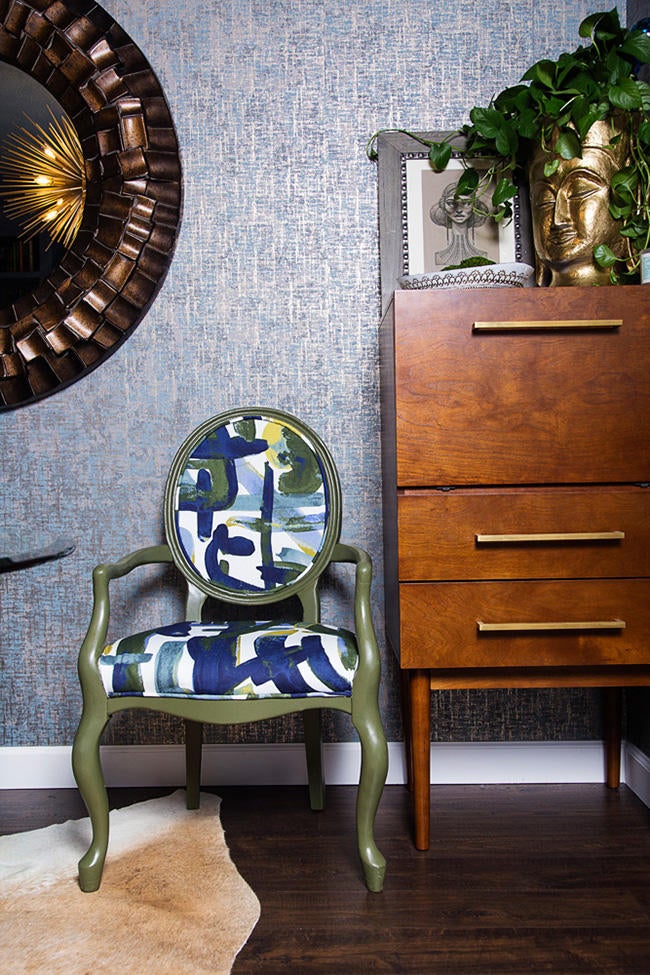
How did you pick the location?
It’s a funny story. I was bringing my grandmother to the courthouse—I think it was to pay her property taxes. I didn’t ever come into this area, but as I passed this street, I saw this big blue building that said, “For rent,” and I thought, “I wonder how much this costs, because this could be a good studio.”
Were you actively looking for a space?
No, I never intended on getting a studio. My plan had always been that I would get a design studio in 2022. I was always saving for it, but [then I saw that building and] was just curious. My grandma said, “Give them a call.” I called, and he said, “It’s 1,900 square feet, and it’s this amount of money.” He asked what I’d want to use [the space] for, I told him, and he said, “If you want, you can just come and take a look at it.” And that’s what I did the next day—I took a look at it and I said, “I want this spot.” I signed my lease three or four days after I saw the spot. It was very impulsive.
Has it changed the way you work?
Absolutely. At home, it was so hard. I have a Maltipoo and a husky, and when I would go into my home office and shut the door, I’d have to ignore my dogs crying and howling. Sometimes I’d go to a coffee shop to try to work, just because being at home was so distracting. And if you have a dog that sheds a lot of hair, you know—it’s everywhere. So when I was supposed to be working, I’d be sitting there feeling guilty about not cleaning. But now when I come to my studio, I’m in work mode. I have two employees now, but I used to be by myself, and I come into my studio and literally I sit here for hours and get all of my tasks done throughout the day.
That’s so great to have that place to focus.
It’s amazing. To be honest, I seriously feel like this is one of the best decisions I’ve ever made.
You mentioned your two employees—and if you were in the shop by yourself just a few months ago, these are recent hires. That’s exciting!
I have an assistant that works two to three days a week who helps pack orders and does anything related to the studio—things like taking out the trash. It’s been the best investment and he’s just so helpful. I told him, “I get distracted more than anybody in this world, so to have someone take these tasks [off my list]—small things like that are key. Something that might take 15 minutes, sometimes I’ve taken two hours out of the day on that. So if you help me get this stuff done, I’m going to make a lot of money in those two hours.” I live by that—that I can make so much more money if I am not doing stuff that distracts me.
My other employee is actually my sister. I officially hired her about two months ago. I always call her my superhero because she’s just amazing—she knows everything about me and how I need things to be done, and she knows my retail shop, so she helps me with tracking orders [for design projects] and runs the retail store. I order all the products and do all of the design, but everything else that relates to my business I give to Lisa.
How have you adjusted to having help with that part of the business?
We use an app called ClickUp to communicate for all my design projects. I have a folder that I duplicate for every project, and it [keeps track of] the different tasks for each project. Even when I first started my design business, my sister did a lot to help me stay on track. She is a much more organized person than I am, so she makes sure that I don’t get too off-focus.
I’d never heard of ClickUp, but I’m looking at it now—it looks like it might be life-changing.
So life-changing. We literally all communicate through the ClickUp app. My assistant just made a task for an order and assigned it to me. I went into the app while I’ve been on the phone with you and assigned it to my sister, and she literally just checked it off. That means she used our company card and placed the order.
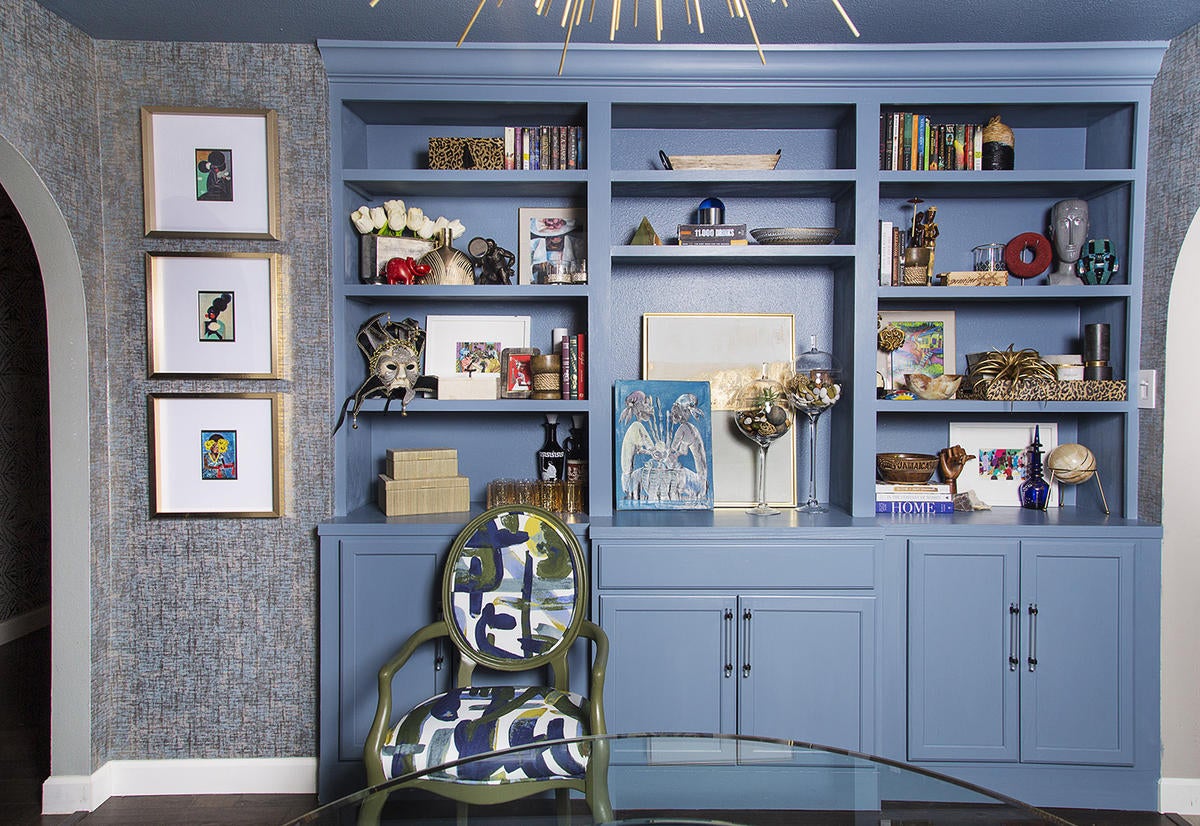
How has your business evolved as you’ve grown as a designer?
I’ve never had a mentor or anyone to model my business off of, and a lot of things were just me jumping in and literally making stuff up. I didn’t know what to charge for anything. Where I’ve evolved is I’ve become much more confident [when] talking to clients about how I work. I explain to clients that this is a creative process—I’m not a personal shopper. I have a welcome letter that I send clients where I say something like, “If you already know what you want, there’s no reason to hire me.”
I think that’s a phrase a lot of designers want to say. Tell me more about that.
This is not a cheap service—it’s an investment. So if you already know what you want, [or] if you’re [going to] knock down all of my creative decisions and selections, why did you hire me? You hired me because you think that I’m good at my job. You think that I have the vision that you’re looking for. So there’s no reason for you to question the things that I suggest. And in the last two or three years, I’ve gotten to the point where when clients say stuff like, “Will this work together?” I am confident enough to look them in the eye and say, “If I say it will work together, then it will work together. So if you allow me to put this together and to create this dream room that you have in your mind, I can give it to you. But if you already know what that’s supposed to look like, there’s no reason to hire me.”
What does it take to get to that place?
I always critique work that I’ve done. But I think what clicked for me is that sometimes I look at things that I’ve done and I say, “Oh, my God, this looks amazing.” It was looking at my own work like that. Do I think, “I wish I had bigger budgets,” or do I wish I could have done this or that? Sure. Is it the best in the industry? No, probably not. But I know what it took to get to where I am, and it’s like, I know exactly what I’m doing. I know what looks good.
When I started telling myself that, something clicked: You can’t expect people to give you the big bucks if you’re not confident in what you do. If I don’t feel like that [about my work], how can I expect other people to—and to give me money? I don’t deserve it unless I know that what I’m doing is great.
How do you develop that confidence?
Within the last year, I’ve realized that when you increase your pricing, you do get better clients. Clients literally think to themselves that if they’re spending “so much money,” you must know what you’re doing. Like I told you before, when I was charging $99 a room, clients didn’t expect anything from me. But when I started increasing my pricing, I noticed that people were treating me more like a professional. [In the months] before I got my studio, I started having clients who assumed that I had an office, or assumed that I had an employee. These are clients that want me to be creative—that’s what they’re spending their money on. They’re not going to spend all this money to do the work themselves.
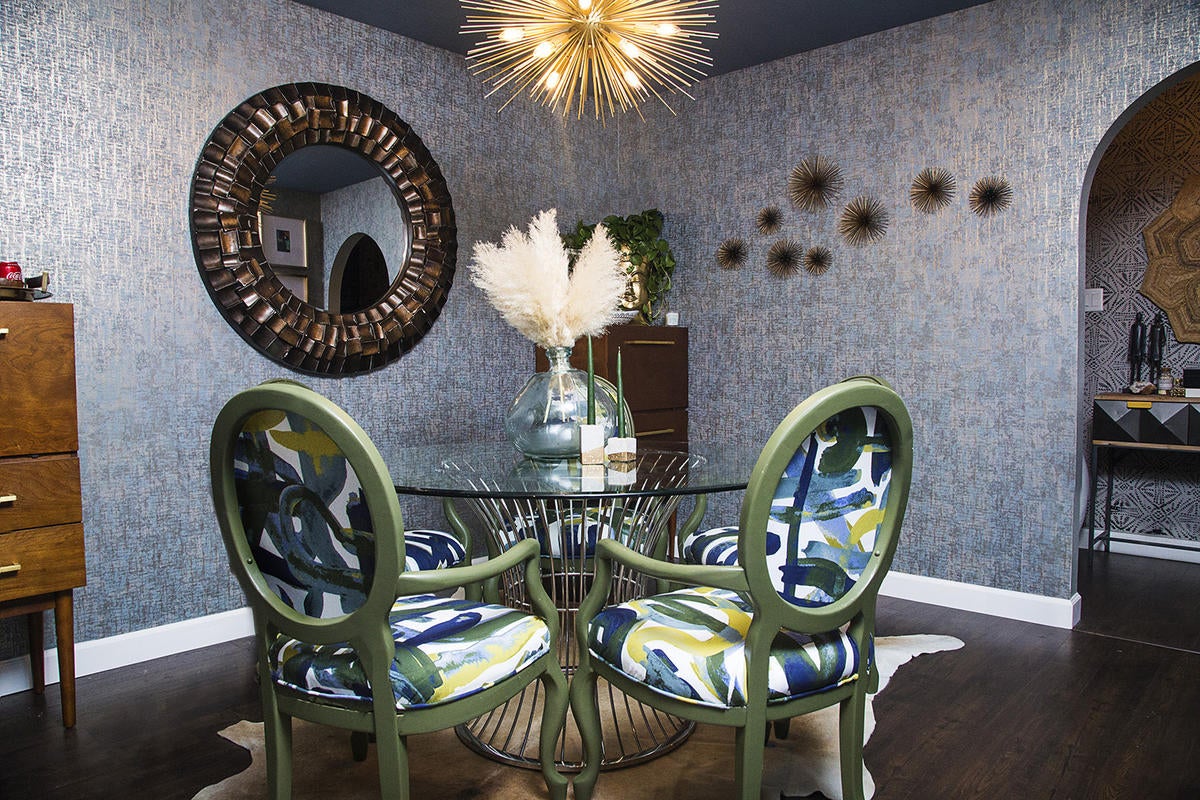
What did it take for you to decide to raise your prices?
Honestly, [it came from] just watching other designers that I knew and admired. I’d been very inexpensive for a very long time. I’m watching people talk in Facebook groups about the different things they’re doing in their businesses, and the different milestones they were reaching—getting design studios, having retail stores, buying company cars, renovating their [own] kitchens, and all this stuff that I knew I couldn’t afford. I saw that I was doing the same caliber of work as all these other designers, but I just was not able to invest in my business the way they were.
I’ve always been all-in [on design], and I was just thinking to myself, “I’m not making enough money in this business.” This is a big, money-generating industry. There’s no reason why I shouldn’t be able to do a kitchen renovation, you know what I mean? And when I thought about it like that, I realized I was literally cheating myself out of money. I looked at other people—not to say that I’m comparing myself where I think I’m better than them, but I watched some people say, “I charge this amount,” or, “This is the minimum I charge per room,” and I was like, “I can get that.” I told myself to just get out of my own head. I told myself that I deserve it.
I also had this mind frame, especially growing up so poor, though I didn’t feel poor when I was growing up—I didn’t realize we were even poor until I got to college and I saw that I had so little compared to other people I went to college with. But even though I didn’t feel poor growing up, it felt like I was asking for too much if I was trying to make a lot of money. It was like, “I just need enough.”
“I just need enough.” That’s a powerful force on your business, and you can stay in that place for a really long time, I think.
Yes. That’s where I was at, even though I’m not that kind of person—I like over-the-top things, I’m not a “just enough” type of person. I like to say I’m bougie basic: You meet me and I’m very down-to-earth—I’m very regular—but I drink milk out of champagne glasses.
Oh, I love that. You were talking about how client expectations changed, but how did your clients react when you raised your rates?
One of my first projects was probably the worst part of my life. It was a disaster. My client was a lawyer, and her husband was a lawyer—and before I started this business, just from growing up where I was, I had not known personally or even interacted with lawyers and doctors. That’s just not how I grew up. We were all living the same, on the poverty line, to say it bluntly. I didn’t meet people that had actually lived [that way] until I got to college. And [even then], you can talk to your professor or the dean when you get a chance to, but they weren’t any professionals that I actually got to interact with, until I started this business. And so the lawyers were my first clients, but the rest were just regular working people, barely making it. When they gave me $100 a room, they didn’t have high expectations, but they still expected something—that’s still $100 out of a regular working paycheck. But then as I started to increase my pricing, I started to work for people that had larger incomes.
Now, I’m working with people that have huge incomes. I have one client right now—we’ve been working on her project for a year and a half, and she hasn’t even seen it and doesn’t need updates. She lives in New York, but she’s been in Puerto Rico for most of the pandemic, and we’ve just designed away and she seen nothing. Back then, I would have never—the clients would be wanting updates every single day.
It’s what you said about paying to give away the control.
Exactly. I have another client right now—I showed her the design of the spaces a few days ago, and she approved it all at the presentation. I made a couple changes [after the fact] because she went home, thought about it, and was like, “Hey, I realized I don’t want to spend $8,000 on a cabinet in my office. Can we get something else?” We made a couple adjustments, but I’m literally just blown away that we had a budget of—I think I probably went over the budget by about $28,000, and I’ve never done that before. I know a lot of designers talk like that, but I’ve [always been] one of those people that tries to show you the biggest, best I can get you for your budget. I typically don’t go over, because I didn’t have enough confidence to do that.
What changed?
I just realized, “I’m going all-out.” As designers, I feel like you expect us to give you the best, right? But I just didn’t see that—I kept thinking budget, budget, budget, instead of I have to show my clients the best.
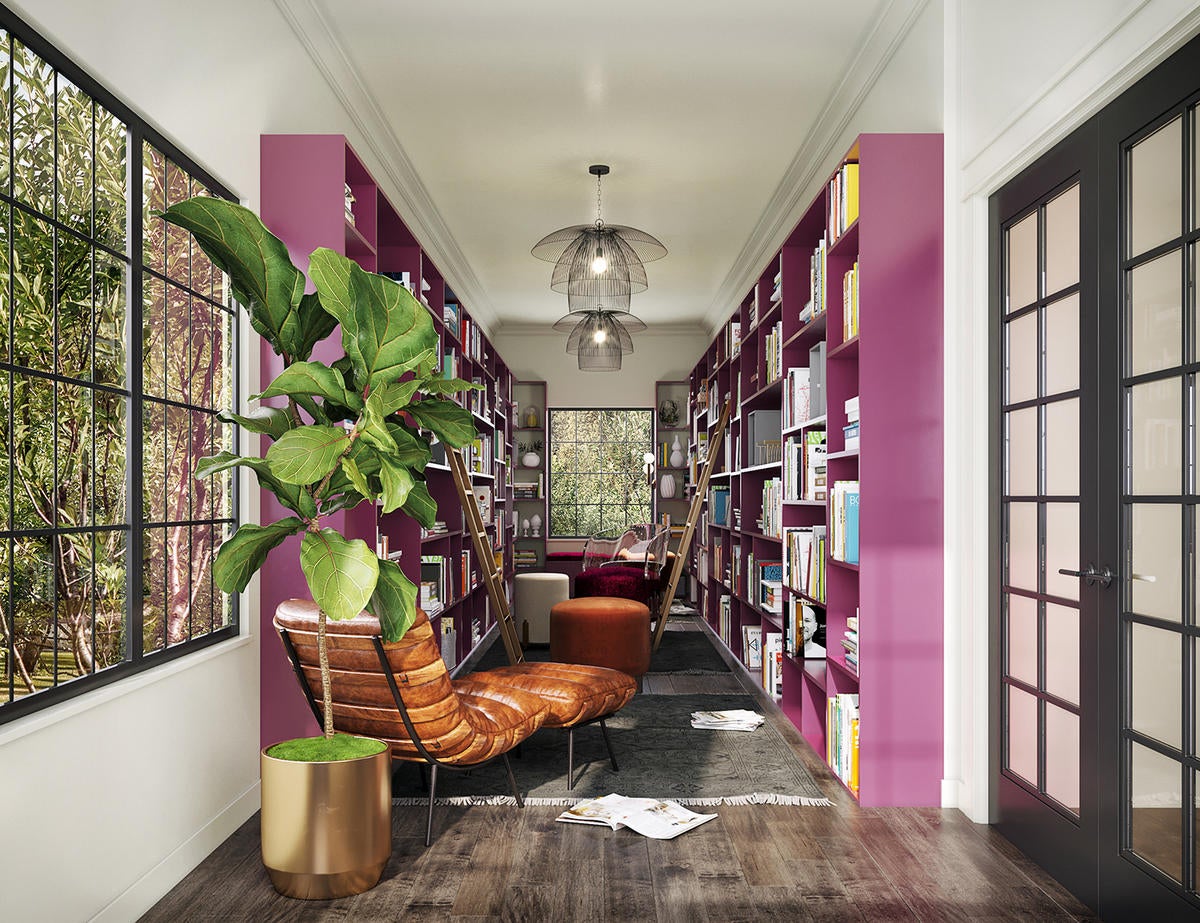
How does budget come in when you’re not letting it rule the project?
If they’re like, “I love this. This is gorgeous. This is everything I could have imagined—but I can’t do $400,000. Can we get it down to this?” And then we can reverse-engineer it to get it to where you want. That’s the way I think about it [now]: I want to make sure I give them the biggest, brightest design they asked for. And then if it works out, good.
I know you’ve interviewed Veronica Solomon—she’s like my mentor in my head, and I love her to death. She’s told us in her Facebook group that she sets that expectation [with clients] from the beginning: When I present this design to you, it’s going to be over budget, but that’s because I’m showing you the best that I can do for the space based on what I know you want, but also with my creativity [layered on top of] that. And then if that doesn’t work for you, we can get it closer to your budget.
But you’re saying, “I want you to see the real thing, first.”
Exactly. And you know, this client that didn’t want to spend $8,000 on a cabinet? She didn’t decrease the budget by $8,000—she’s actually spending a little bit more, because I found her a different cabinet, but also a leather chair with an ottoman for the office that’s almost $4,000 and a little drink table that cost $800. And she approved all of that, too. Clients like that—I’ve never had those clients before.
How did budgets increasing change the way you shopped?
That just opened it up so much more, and gave me access to vendors that I love and that I was never able to afford [before]. It’s actually been a mental adjustment for me, too, because I have to tell myself, “Just because you haven’t been able to afford it, that does not mean that your clients can’t or that your clients shouldn’t.”
I’ll be talking with my clients in a meeting and I’ll say, “I’m telling you, our baths are going to be epic.” And my clients are like, “You know you won’t be taking baths over here, right?” Or I’ll say, “We can all fit in this shower!” They think it’s so funny. But I have to tell myself sometimes, “You know this isn’t your house, right?” I get so invested in making my clients’ homes perfect, and it’s such a personal thing for me as well—I think, “What do I want my lifestyle to be?” And that’s how I design.
I love that approach.
I design that way first, and then if that’s too expensive, we can scale down—or if they want something more high-end than that, we can scale up!
How many people actually ask to scale up?
I once had a client where I designed the entire bedroom before I sourced the bed because I was having such a hard time trying to figure out what bed I wanted for her. And finally I said to myself, “I’m just going to see if Wayfair’s Perigold has anything,” and I found one I liked that was about $3,800—which pushed the overall budget to right about what her budget was for the room. And then when I showed her the design and gave her a link to it—because I’m also very transparent about pricing and my sources—and she said, “Doesn’t this seem kind of cheap to you?”
When she said that, it made me think [about] how everybody has their own idea of what they think is quality or not. And for her, she knows nothing about these brands or these materials—she’s only thinking about the cost of the item. So I found another bed, from Caracole, and it ended up being closer to $5,500. I showed her the bed and she said, “I love it.” And I told her how much it was and she said, “Oh, I’m fine with the price.”
There are instances where I might need to get my client something a little higher-end than what I’m used to, but if I stop trying to design for who I was and instead design for what I want to be able to afford, I feel like it’s so much easier for me to sell that project and tell that [design] story. At the same time, that doesn’t mean I go sourcing $25,000 cabinets—even for the clients that I think could afford it. The reason I’m good at selling is because I sell things that I believe in. I would never tell you to buy a $25,000 cabinet, because I don’t believe in buying a $25,000 cabinet.
Did your process change as your clients changed?
A lot of it is the same. I still use the same questions on my design questionnaire. But when I first started doing this, I would send clients a concept board first [to make sure] I was going in the right direction. That was my own self-confidence shaking—I was hoping that my clients were going to like where I wanted to take the project. It was, “Let me send you a couple ideas to see how you feel.” But I’ve stopped doing that unless it’s a large project.
Another thing that’s changed is that I used to actually send them my designs. Now, I don’t send my clients anything—the only emails they get are project updates. Anything they review, they review with me in person. I don’t give them any time to be home and talk about it with their husband, or to second-guess it, or to send it to a friend. I show them everything in person, and I do that either at my studio, which I prefer, or I’ll meet with them at their homes. That’s how I do everything: budgets, final invoicing, contracts. I do some contracts over, because I have clients sign contracts digitally, but they see my contract and we go through it together at the consultation.
How many projects are you working on right now?
I’m working on 14 projects right now—wait, no. It’s actually 15, because I just booked another one today.
Congratulations!
Thank you. It’s been a big adjustment for me, because I used to have this service called a one-day makeover—it was for clients that have a smaller budget, like $4,000 rooms. I’ve gone from having a 50-50 [split between] one-day makeovers and full-service projects to doing all full-service, and it’s so much more work!
How do you decide what you say yes to?
This is a big battle for me right now because—I kind of feel bad about it, but I’m only saying yes to the projects that have the budget that I want to work with and that have the design aesthetic that I want to work in. So I’ve been turning down traditional projects, because I don’t think it’s worth it to do a project with an aesthetic that’s not—
Where your heart is?
Yes. It’s so much work to do one project—and with lead times right now, it’s even crazier because of all of the managing expectations, trying to stay on top of deliveries, tracking stuff, and reselecting things. I just don’t think it’s worth it to do a project in an aesthetic that is not where I want to be.
That’s an exciting crossroads to be at, but I know how hard it is to say no.
And as much as I’ve talked about doing inexpensive projects and pretty much working for free, I’m also one of those people that is always trying to make money. I’ve done so many different things—I used to make and sell jewelry, I used to make and sell candles, I used to braid hair. So whenever there’s an opportunity for me to make more money, it’s so hard for me to turn it down. But I just know, for me to even get some kind of sense of freedom in my mind, I can’t take on things that are going to bring down my brain.
Our resident business coach Sean Low always writes in his columns about how your brain is the one thing you can’t outsource. When you look ahead, where do you want to be in terms of the balance between how much work you have and how many people you have working for you?
Well, in a dream world, I want my firm to be small. I’m a big family person. I want to work with my family for the rest of my life. I much prefer to just have it be myself, my sister, my mom—she does my bookkeeping for me, and sometimes I pay her, too, as a contractor. But I much prefer staying with my family, because that’s where I’m most comfortable, that’s where I’m most myself, and they keep me accountable.
The only other hire I might do would be somebody who’s more familiar with the design world, like a design assistant, where I don’t have to actually give up control of the actual design but who could help me get rid of all of these regular design tasks. My intention is for my firm to remain small, but I do want to have larger projects. I feel like I can take on more work per project if I stop taking on as many jobs. Right now, I have a lot of two-rooms and a couple of one-room projects, but I much prefer the projects when I’m really taking control of an entire house. I’ve found over the years that even the clients that have been very happy with me, with those one-rooms I’ve done, I don’t get a lot of repeat work or even word-of-mouth traffic from them. But the clients that I’ve had larger projects with are the clients that get me more work.
To learn more about Whitney Jones, visit her website or find her on Instagram.
Homepage image: Whitney Jones | Courtesy of Whitney J Decor

















